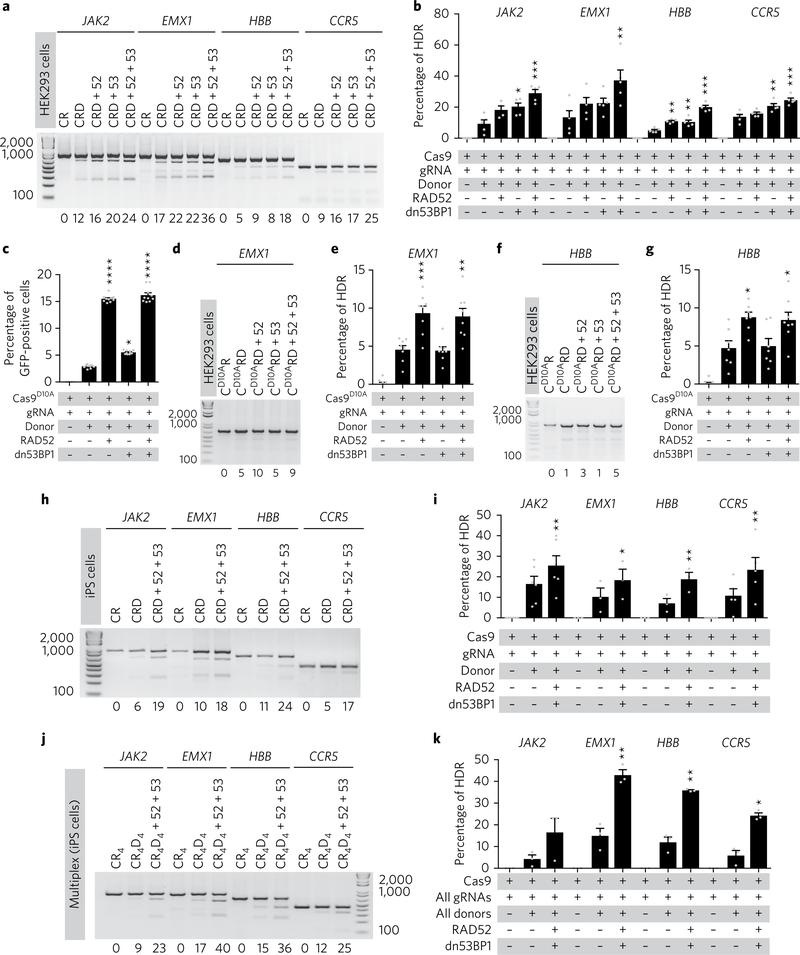Fig. 3 |. Co-expression of RAD52 and dn53BP1 improves HDR frequency at multiple loci in human cells.
a,b, Representative gel electrophoresis images showing PmeI-cleaved PCR products indicative of HDR (a) and quantification of HDR frequency (b) following targeting of JAK2, EMX1, HBB and CCR5 in the presence or absence of RAD52, dn53BP1 or both, in HEK293 cells. c–g, Quantification of HDR frequency following targeting with Cas9D10A nickase of GFP (c), EMX1 (d and e) or HBB (f and g) in HEK293 cells. h,i, Representative gel electrophoresis and quantification of HDR frequency at the JAK2, EMX1, CCR5 and HBB locus in human iPS cells. j,k, Simultaneous HDR-mediated gene editing at all four loci using a multiplexed approach. CR, Cas9 + gRNA; CRD, CR + donor; CR4, Cas9 + all gRNAs; CR4D4, Cas9 + all gRNAs + all donors; 52, RAD52; 53, dn53BP1. In b, c, e and g, significance was calculated using a one-way analysis of variance with Dunnett’s multiple comparison test. In i and k, a paired two-tailed t-test was used (*P < 0.05, **P < 0.01, ***P < 0.001). Pooled data from n ≥ 3 independent experiments are shown with individual data points as grey dots. The percentage of HDR for each representative gel is shown below each figure. Error bars represent s.e.m.

